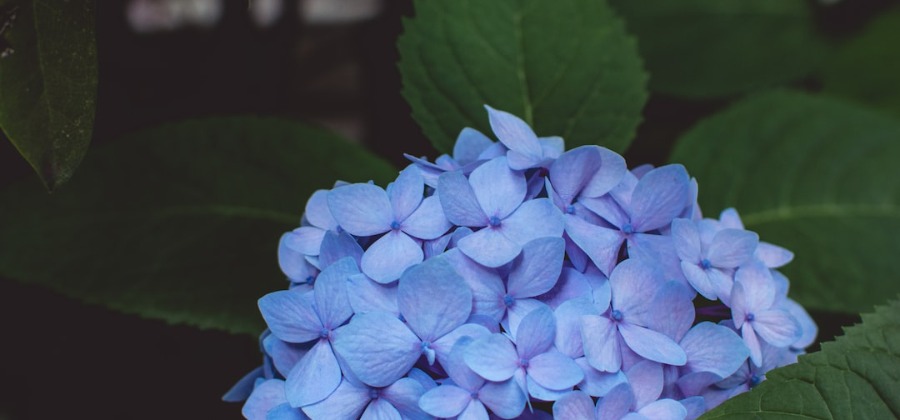It’s that time of year again—time to plant hydrangeas! Unfortunately, most people don’t know how much water the flowers need. Hydrangeas are native to temperate regions and do best in moderately moist, acidic soil areas.

They need between 1 and 2 gallons of water per week but can tolerate dry conditions better than many other plants. If you live in an area where tap water is not good for plants, you may consider using a water ionizer before watering your hydrangeas.
How to Water a Hydrangea
Hydrangeas need about 1 inch of water per week in the summer and 2 inches in the winter. A weekly watering schedule will help prolong the blooming season. If your hydrangea is growing in a container, check the soil every few days and add water if necessary.
When to water a Hydrangea?
Hydrangeas are native to warm climates, so they do not need as much water as other plants. A hydrangea’s soil should be moist but not soggy, and the plant should be watered every week or two during the growing season, depending on the humidity. A hydrangea may require weekly watering for several months in severe cases of prolonged dryness.
How much water does a Hydrangea need?
Hydrangeas require around 1 gallon of water per week, divided evenly over a week. Keep the soil moist but not wet by watering in the morning and at night. Do not water during the day if the surface is dry.
Hydrangeas should be watered according to the soil’s moisture level. If the surface of the soil is dry, water regularly; if the surface of the soil is wet but the center is dry, water every other day; if the surface of the soil is wet and the center is dry, water once a week.
How to Give Your Hydrangeas Enough Water
One of the most common questions gardeners ask is how much water do hydrangeas need. Unlike many other plants, hydrangeas do not require significant amounts of water during summer. In fact, when watering hydrangeas, it is best to apply only a light mist rather than pouring water on the plant directly.
During the winter, however, hydrangeas will need more water. Apply a light layer of water once a week to the leaves and roots to keep them hydrated. Do not over-water or your hydrangea will become boggy and susceptible to fungal infections.
What to Do If Your Hydrangeas Don’t Receive Enough Water
Hydrangeas can suffer from drought if they don’t receive enough water. To prevent this, clean your plants regularly and keep the soil moist. If your hydrangeas are still not receiving adequate moisture, you may need to water them in stages. Begin by watering them deeply for a few minutes, then allowing the soil to dry before watering again. Continue this cycle until your plants receive adequate water.
How to Care for a Hydrangea
Watering a hydrangea is a delicate balance. Too much water and you could overwater the plant, while not watering it enough will cause the leaves to turn yellow and die. Follow these tips for watering your hydrangea:
- Hydrangeas need a lot of water when growing new flowers in the late fall and early winter. Water them deeply every two to three days, then slowly decrease the frequency as the plant goes into dormancy.
- In the summertime, reduce watering to once every other day or so. Check the soil moisture level; if it’s dry, water more deeply.
- If your hydrangea is in a pot, repot it every two or three years using fresh potting soil mixed with some sand or perlite for drainage.
Frequently Asked Questions
Are hydrangeas drought-tolerant?
Hydrangeas are not as drought-tolerant as other plants and may need more water in prolonged dry times. However, they can usually withstand short periods of very low water availability. You can check the soil moisture level around your hydrangea every few days to see how it responds. If the soil is dry, water it well. If the soil appears wet, but the hydrangea is wilting, give it less water. In general, if you see new growth emerging from the surface of the soil and the plant is not wilting excessively, give it a good watering. If there has been significant rain recently, chances are good that your hydrangea will not require additional irrigation.
How much should I water my hydrangea?
Give your hydrangea enough water to moisten its root zone but do not over-water thoroughly; too much moisture can cause roots to rot. Check the soil moisture level around your hydrangea every few days to determine how much water it needs.
How do I prune my hydrangea?
Prune your hydrangea as needed to maintain its shape and size. When you prune your hydrangea, remove any dead or damaged branches so the plant can get the nutrients it needs to grow.
Conclusion
Hydrangeas need a lot of water, but it’s important to figure out how much they need and when they should be watering them. By following these tips, you can ensure your hydrangea is getting the water it needs to stay healthy and look great.




Leave a Reply